Related Research Articles
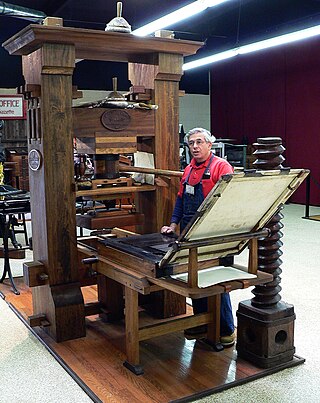
A printing press is a mechanical device for applying pressure to an inked surface resting upon a print medium, thereby transferring the ink. It marked a dramatic improvement on earlier printing methods in which the cloth, paper, or other medium was brushed or rubbed repeatedly to achieve the transfer of ink and accelerated the process. Typically used for texts, the invention and global spread of the printing press was one of the most influential events in the second millennium.

Gyro Gearloose is a cartoon character created in 1952 by Carl Barks for Disney comics. An anthropomorphic chicken, he is part of the Donald Duck universe, appearing in comic book stories as a friend of Donald Duck, Scrooge McDuck, and anyone who is associated with them. He was also featured in the animated series DuckTales. Gyro first appeared in the Carl Barks comic "Gladstone's Terrible Secret", and was the regular lead character in 4-page backup stories in Barks' issues of Uncle Scrooge, starting with issue #13 and continuing through #41.
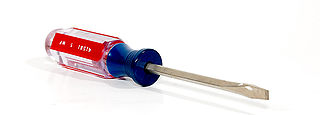
A screwdriver is a tool, manual or powered, used for turning screws.
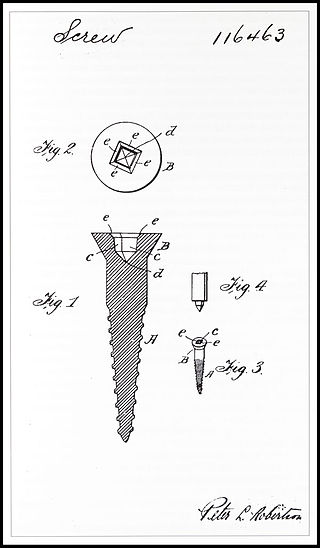
Peter Lymburner Robertson was a Canadian inventor, industrialist, salesman, and philanthropist who popularized the square-socket drive for screws, often called the Robertson drive. Although a square-socket drive had been conceived decades before, it had never been developed into a commercial success because the design was difficult to manufacture. Robertson's efficient manufacturing technique using cold forming for the screw's head is what made the idea a commercial success.
Witold Rybczynski is a Canadian American architect, professor and writer. He is currently the Martin and Margy Meyerson Professor Emeritus of Urbanism at the University of Pennsylvania.

Home: A Short History of An Idea is a book published in 1986 by Canadian architect, professor and writer Witold Rybczynski.

A Robertson screw, also known as a square screw or Scrulox, is a type of screw with a square-shaped socket in the screw head and a corresponding square protrusion on the tool. Both the tool and socket have a slight taper.

A worm drive is a gear arrangement in which a worm meshes with a worm wheel. Its main purpose is to translate the motion of two perpendicular axes or to translate circular motion to linear motion .The two elements are also called the worm screw and worm gear. The terminology is often confused by imprecise use of the term worm gear to refer to the worm, the worm wheel, or the worm drive as a unit.
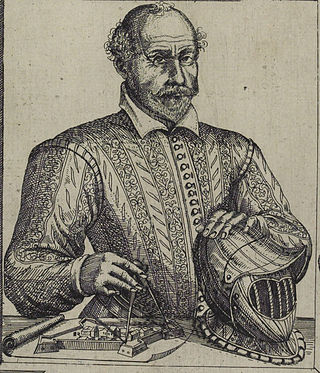
Agostino Ramelli was an Italian engineer best known for writing and illustrating the book of engineering designs Le diverse et artificiose machine del Capitano Agostino Ramelli, which contains, among others, his design for the bookwheel.

An impact driver is a tool that delivers a strong, sudden rotational force and forward thrust. The force can be delivered either by striking with a hammer in the case of manual impact drivers, or mechanically in the case of powered impact drivers.

The screw is a mechanism that converts rotational motion to linear motion, and a torque to a linear force. It is one of the six classical simple machines. The most common form consists of a cylindrical shaft with helical grooves or ridges called threads around the outside. The screw passes through a hole in another object or medium, with threads on the inside of the hole that mesh with the screw's threads. When the shaft of the screw is rotated relative to the stationary threads, the screw moves along its axis relative to the medium surrounding it; for example rotating a wood screw forces it into wood. In screw mechanisms, either the screw shaft can rotate through a threaded hole in a stationary object, or a threaded collar such as a nut can rotate around a stationary screw shaft. Geometrically, a screw can be viewed as a narrow inclined plane wrapped around a cylinder.

Acquainted with the Night: Excursions through the World After Dark is a non-fiction book by Christopher Dewdney about various aspects of night. It was first published in 2004 by HarperCollins. It uses the same title as the Robert Frost poem "Acquainted with the Night". The book consists of 14 chapters, with one chapter dedicated to each hour of the night, from 6 pm to 5 am. Mini-essays populate each chapter which each follow a theme, like nocturnal creatures, dreams, astronomy, and mythology. Other subjects and topics touched upon include science, art, culture, natural history, superstitions, and psychology. The book was a finalist for the 2004 Governor General's Awards and for the 2005 Charles Taylor Prize. It tied with Dark Matter: Reading The Bones for the World Fantasy Award in Anthologies.

The bookwheel is a type of rotating bookcase that allows one person to read multiple books in one location with ease. The books are rotated vertically similar to the motion of a water wheel, as opposed to rotating on a flat table surface. The design for the bookwheel originally appeared in a 16th-century illustration by Agostino Ramelli at a time when large books posed practical problems for readers. Ramelli's design influenced other engineers and, though now obsolete, inspires modern artists and historians.
In books and other works, the subtitle is an explanatory title added by the author to the title proper of a work. Another kind of subtitle, often used in the past, is the alternative title, also called alternate title, traditionally denoted and added to the title with the alternative conjunction "or", hence its appellation.
Cam out is a process by which a screwdriver slips out of the head of a screw being driven once the torque required to turn the screw exceeds a certain amount. Repeatedly camming out damages the screw, and possibly also the screwdriver, and should normally be avoided.

A screw is an externally helical threaded fastener capable of being tightened or released by a twisting force (torque) to the head. The most common uses of screws are to hold objects together and there are many forms for a variety of materials. Screws might be inserted into holes in assembled parts or a screw may form its own thread. The difference between a screw and a bolt is that the latter is designed to be tightened or released by torquing a nut.

In manufacturing, threading is the process of creating a screw thread. More screw threads are produced each year than any other machine element. There are many methods of generating threads, including subtractive methods ; deformative or transformative methods ; additive methods ; or combinations thereof.
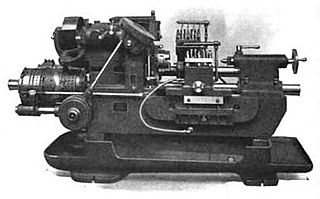
In metalworking and woodworking, an automatic lathe is a lathe with an automatically controlled cutting process. Automatic lathes were first developed in the 1870s and were mechanically controlled. From the advent of NC and CNC in the 1950s, the term automatic lathe has generally been used for only mechanically controlled lathes, although some manufacturers market Swiss-type CNC lathes as 'automatic'.
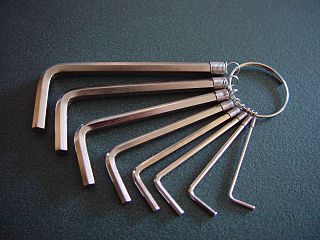
A hex key is a simple driver for bolts or screws that have heads with internal hexagonal recesses (sockets).
References
- ↑ Rybczynski, Witold (2000), One Good Turn: A Natural History of the Screwdriver and the Screw , Scribner, ISBN 978-0-684-86729-8, LCCN 00036988, OCLC 462234518. Various republications (paperback, e-book, braille, etc).
- ↑ Shayt, David H (October 2001). "One Good Turn: A Natural History of the Screwdriver and the Screw (review)". Technology and Culture. 42 (4): 807–808. doi:10.1353/tech.2001.0187. ISSN 1097-3729.